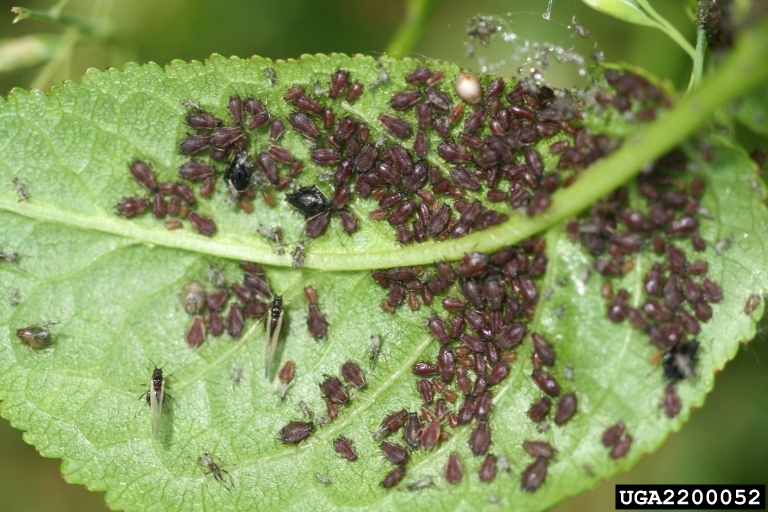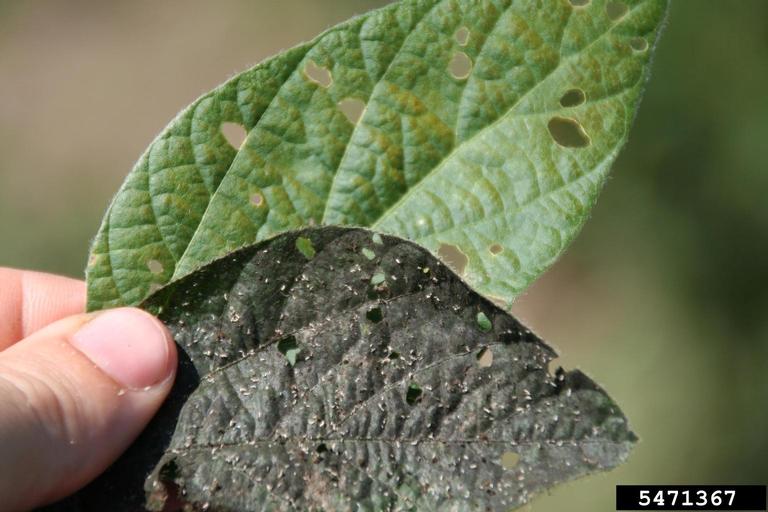Integrated Pest Management
Aphids
Pest Description
- most less than 1/8 inch; over 500 aphid species in Utah
- range in color from green, yellow, purple, red to black
- teardrop to oval in shape with two “pipes” (cornicles) sticking out the rear end
- some aphids excrete a white, cottony substance
- may or may not have wings
Host Plants, Diet & Damage
- some are host specific; some feed on multiple host plants
- feed on plant sap using straw-like mouthparts
- can feed on roots, trunk, stems or leaves
- can cause twisting, cupping, leaf rolling, galls and unsightly cottony masses
- do not typically cause major tree/plant health issues
- exude honeydew onto plants, homes and cars
- sooty mold growing on honeydew can be unsightly
- mass fall migrations can sometimes cause alarm
- some transmit plant diseases
Biology, Life Cycle & Damaging Life Stage
- life cycles are variable depending on aphid species
- overwinter as eggs outdoors
- mating may occur; females can give birth to living young
- wings may form during migrations between hosts or when populations become too high
- nymphs and adults are the damaging life stages
IPM Recommendations
- Little negative effect on tree health; tolerate pest.
- Wash off aphids with a strong stream of water.
- Apply horticultural oils to overwintering eggs in spring.
- Apply insecticidal soap to nymphs and adults.
- Apply a systemic insecticide (neonicitinoid) in the spring.
- Apply a cover spray (pyrethroids) when aphids are present.




